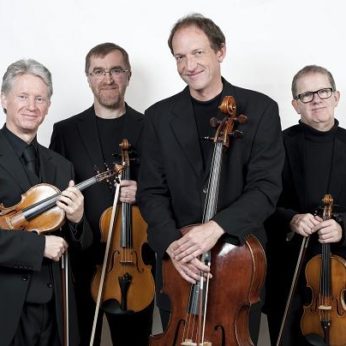Composer: David Bruce (b. 1970)
Performance date: 04/07/2014
Venue: St. Brendan’s Church
Composition Year: 2008
Duration: 00:23:08
Recording Engineer: Richard McCullough, RTE
Instrumentation Category:Small Mixed Ensemble
Instrumentation Other: cl, 2vn, va, vc
Artists:
Julian Bliss -
[clarinet]
Vanbrugh Quartet (Gregory Ellis, Keith Pascoe [violins] Simon Aspell [viola] Christopher Marwood [cello]) -
[quartet]

There is a paradox in music, and indeed all
art – the fact that life-enriching art has been produced, even inspired by
conditions of tragedy, brutality and oppression, a famous example being
Messiaen’s Quartet for the End of Time, written while he was in a prisoner of
war camp. Gumboot dancing bears this
trait – it was born out of the brutal labour conditions in South Africa under
Apartheid, in which black miners were chained together and wore gumboots while
they worked in the flooded gold mines, because it was cheaper for the owners to
supply the boots than to drain the floodwater from the mine. Apparently
slapping the boots and chains was used by the workers as a form of
communication which was otherwise banned in the mine, and this later developed
into a form of dance. If the examples of gumboot
dancing available online are anything to go by, it is characterised by a
huge vitality and zest for life. So this for me is a striking example of how
something beautiful and life-enhancing can come out of something far more
negative. Of course this paradox has a far simpler explanation – the resilience
of the human spirit.
My Gumboots
is in two parts of roughly equal length, the first is tender and slow moving,
at times yearning; at times seemingly expressing a kind of tranquillity and
inner peace. The second is a complete contrast, consisting of five,
ever-more-lively gumboot dances,
often joyful and always vital.
However, although there are some African music
influences in the music, I don’t see the piece as being specifically about the
gumboot dancers, if anything it could be seen as an abstract celebration of the
rejuvenating power of dance, moving as it does from introspection through to
celebration. I would like to think however, that the emotional journey of the
piece, and specifically the complete contrast between the two halves will force
the listener to conjecture some kind of external meaning to the music – the
tenderness of the first half should haunt us as we enjoy the bustle of the
second; that bustle itself should force us to question or revaluate the
tranquillity of the first half. But to impose a meaning beyond that would be
stepping on dangerous ground – the fact is you will choose your own meaning,
and hear your own story, whether I want you to or not.
Copyright © 2025 West Cork Music. All rights reserved.
Designed and developed by Matrix Internet